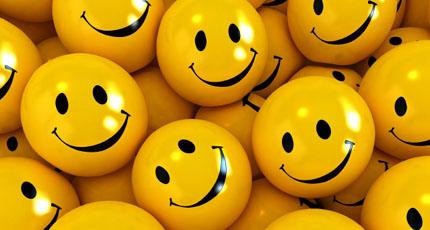Psychology of laughter
She started out her career by examining the voice more generally, and the rich information it offers about our identity. “You can get a good shot at my gender, my age, my socioeconomic status, my geographical origins, my mood, my health, and even things to do with interactions,” she says.
One of her experiments involved scanning professional impersonator Duncan Wisbey to explore the way that he comes to adopt the subtle mannerisms of other people’s speech (see video, below). Surprisingly, she found that the brain activity seemed to reflect areas normally associated with bodily motion and visualisation – as he, almost literally, tried to work his way under the skin of a character. More generally, the work on impersonations has helped her pin down the regions involved in things like accent and articulation – important aspects of our vocal identity.
But it was a study in Namibia that made Scott begin to realise laughter is one of our richest vocal tics. Previous research had shown that we can all recognise six universal emotions across cultures – fear, anger, surprise, disgust, sadness, happiness – based on facial expressions. Scott, however, wanted to see if we encode more subtle information in our voice. So she asked indigenous Namibians and English people to listen to recordings of each other and rate the emotions represented – including the six accepted universals, as well as relief, triumph, or contentment. Laughter was the most easily recognisable emotion across both groups. “Almost immediately, it started to look different from the other positive emotions,” she says.
The more she probed, the more she became fascinated by its intricacies. For instance, she soon found out that the vast majority of laughs have nothing to do with humour. “People genuinely think they are mostly laughing at other people’s jokes, but within a conversation, the person who laughs most at any one time is the person who is talking,” she says. Instead, she now sees laughter as a “social emotion” that brings us together and helps us to bond, whether or not something is actually funny. “When you laugh with people, you show them that you like them, you agree with them, or that you are in same group as them,” she says. “Laughter is an index of the strength of a relationship.”
Infectious giggles
That might explain why couples can roll about laughing at each other’s apparent wit – while onlookers fail to be infected. “You’ll hear someone say ‘he’s got a great sense of humour and I really fancy him because of it’. What you mean is ‘I fancy him and I show him I like him by laughing when I’m around him.’”
Indeed, mirth might be the primary way of maintaining relationships; she points to research, for instance, showing that couples who laugh with each other find it much easier to dissipate tension after a stressful event – and overall, they are likely to stay together for longer. Other recent studies have shown that people who laugh together at funny videos are also more likely to open up about personal information – paving more common ground between people.
Even the hilarity at the German man falling in the frozen swimming pool may have united the friends. “It’s interesting how quickly his friends start laughing – I think it’s to make him feel better,” says Scott. Along these lines, Robin Dunbar at the University of Oxford has found that laughter correlates with increased pain threshold, perhaps by encouraging the release of endorphins – chemicals that should also improve social bonding.
Scott is now interested in picking apart the differences between the “posed” giggles we might use to pepper our conversation – and the absolutely involuntary fits that can destroy a TV or radio broadcast, like this:
David Robson

